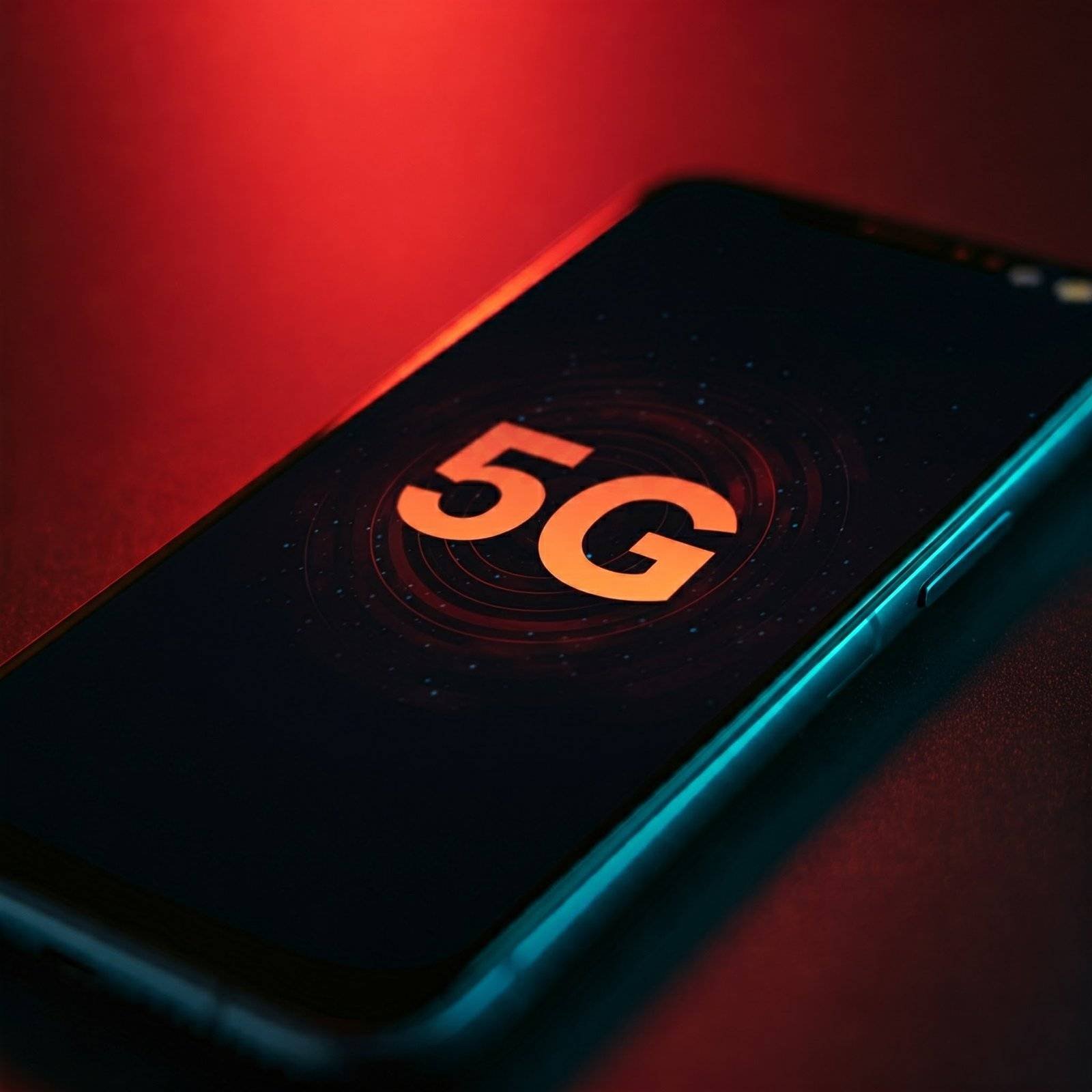The world of mobile networks is on the brink of a major transformation with the advent of 5G technology. This new generation of connectivity promises faster speeds, lower latency, and the ability to connect countless devices simultaneously. Understanding the evolution of mobile networks and the unique features of 5G is essential to grasp the potential it holds for the future.
Key Takeaways
- 5G technology offers significantly faster speeds compared to previous generations of mobile networks.
- The infrastructure required for 5G is more complex and extensive, necessitating substantial investment.
- 5G enables the Internet of Things (IoT) by connecting a vast number of devices seamlessly.
- Security and regulatory challenges must be addressed to ensure the safe deployment of 5G networks.
- Global adoption of 5G varies, with some regions advancing faster than others.
The Evolution Of Mobile Networks
From 1G To 4G
Mobile networks have come a long way since the 1980s. The first generation, 1G, was all about voice calls. It allowed people to use phones away from home or the office. Then came 2G, which introduced text messaging. This was a big step forward. With 3G, smartphones became popular because of faster network speeds. Finally, 4G brought high data-transfer rates, making it possible to stream videos with minimal buffering.
Key Milestones In Connectivity
- 1G: Introduced voice calls.
- 2G: Added text messaging.
- 3G: Enabled smartphones with faster speeds.
- 4G: Allowed high-speed video streaming.
The Role Of Technology Advancements
Technology has played a huge role in the evolution of mobile networks. Each new generation brought better speeds and more features. This has changed how we communicate and use our devices. The advancements have made it possible to connect more devices and use more data-intensive applications.
Understanding 5G Technology

What Makes 5G Different?
5G technology is a major leap from its predecessors, offering lightning-fast speeds and enhanced capabilities. Unlike 4G, which maxes out at 1 Gbps, 5G can reach peak download speeds of 20 Gbps. This means it can handle much more data traffic, paving the way for transformative technologies like self-driving cars and 4K/8K video streaming. Additionally, 5G significantly reduces latency to just 1-2 milliseconds, compared to 20-70 milliseconds on 4G.
Key Components Of 5G Networks
5G networks use a variety of advanced technologies to achieve their ultra-fast speeds and low latency:
- Sub-6 GHz and mmWave: These radio frequencies provide good coverage and massive bandwidth for superfast speeds.
- Advanced Antenna Systems: Utilizing MIMO (multiple input, multiple output) technology, 5G can handle multiple connections simultaneously, increasing capacity and density.
- Small Cell Networks: These compact base stations can be installed on light poles and rooftops, providing localized capacity boosts.
- Orthogonal Frequency-Division Multiple Access (OFDMA): This technique allows efficient use of spectrum so multiple users can access the network at the same time.
- Network Slicing: This allows operators to create multiple virtual networks over a common physical infrastructure, tailored for specific applications or clients.
- Edge Computing: Processing data closer to the user via small data centers reduces latency, complementing 5G’s speed.
The Science Behind 5G Frequencies
5G operates on a range of frequencies, from sub-6 GHz to mmWave (24-40 GHz). The sub-6 GHz bands offer broader coverage, while mmWave bands provide higher speeds and capacity. This combination allows 5G to deliver both wide-area coverage and high-speed data transmission. The use of higher frequency bands is key to achieving the massive bandwidth and low latency that 5G promises.
5G technology is set to redefine how we connect to the internet, offering faster speeds, lower latency, and increased network capacity. This paves the way for a truly connected future.
Challenges And Considerations

Infrastructure Requirements
Deploying 5G networks demands a significant investment in new infrastructure, including antennas and base stations. This development must be supported by regulatory policies and industry collaboration to ensure smooth implementation. The need for additional cell towers and fiber optic cables can be both expensive and time-consuming.
Security Concerns
With increased connectivity comes heightened security risks. The complexity and use of new technologies in 5G make it more vulnerable to cyber threats. Businesses must adopt comprehensive security strategies to protect against potential threats and vulnerabilities in the 5G ecosystem.
Regulatory Hurdles
Governments and regulatory bodies need to establish clear guidelines and standards for 5G deployment to ensure safety and fairness. Collaboration between industry stakeholders and regulators is essential to address these challenges and promote the responsible use of 5G technology.
Building a robust 5G network infrastructure entails careful planning, investment, and collaboration among telecom operators, government bodies, and technology providers. By prioritizing high-speed connections and extensive coverage, the foundation for a truly transformative 5G network can be laid, unlocking unprecedented opportunities for industries, individuals, and society at large.
The Role Of IoT In 5G
Connecting Smart Devices
5G technology is set to revolutionize the Internet of Things (IoT) by enabling a massive number of devices to connect simultaneously. 5G can support up to 1 million connections per square kilometer, making it ideal for dense urban environments. This is crucial for the implementation of advanced IoT applications, such as smart cities and industrial automation.
One of the key technologies that 5G enables is the narrowband Internet of Things (NB-IoT). Unlike traditional 4G connections, which provide more bandwidth than most IoT devices need, NB-IoT offers just the right amount of connectivity. This helps in saving power and extending battery life, making it perfect for devices like smart appliances and sensors.
Data Management And Analytics
With the increase in connected devices, managing and analyzing the data they generate becomes a significant challenge. 5G networks offer the high speed and low latency needed to handle large volumes of data in real-time. This is essential for applications that require immediate insights, such as autonomous vehicles and remote healthcare.
5G also supports edge computing, which brings data processing closer to the source. This reduces latency and bandwidth usage, making data management more efficient. By combining 5G with edge computing, businesses can achieve faster insights and better data control.
Future Applications Of IoT
The future of IoT in a 5G world is incredibly promising. From smart homes to connected healthcare, the possibilities are endless. For example, 5G can enable real-time monitoring of patients through wearable devices, providing immediate alerts to healthcare providers in case of emergencies.
In the industrial sector, 5G will facilitate the creation of ultra-connected factories. These factories will use IoT devices to monitor and optimize every aspect of production, from supply chain management to quality control. This will lead to increased efficiency and reduced operational costs.
The 5G standard also incorporates, and builds upon, a set of existing standards aimed specifically at supporting low bandwidth, low power, IoT devices. This ensures that even the simplest devices can benefit from the advancements in 5G technology.
In summary, 5G is not just about faster internet speeds; it’s about creating a more connected and efficient world. The integration of IoT with 5G will unlock new opportunities and transform various sectors, making our lives smarter and more convenient.
Global Adoption Trends
Regional Variations In Deployment
Where you live and work plays a big role in whether you have access to 5G. China is the front-runner in 5G adoption, with South Korea, the U.S., Canada, and Saudi Arabia not too far behind.
Case Studies Of Successful Implementations
In early 2020, most U.S.-based networking executives still viewed 4G LTE and current or previous versions of Wi-Fi as the most critical technologies for their businesses. Less than a year later, they had changed their tune. In March 2021, networking executives surveyed around the globe said 5G and Wi-Fi 6 were the most critical technologies. Leaders cited the importance of advanced wireless capabilities to address current and future business disruptions, increase bandwidth for remote workers, enhance network security, and engage with customers through digital platforms.
Predictions For Future Growth
Projections indicate that 5G will overtake other mobile access technologies in terms of subscriptions by the year 2028. By 2029, it’s anticipated that the number of 5G subscriptions worldwide will be close to 5.6 billion, representing 60% of all mobile subscriptions. In terms of regional adoption, North America is expected to lead with a 90% 5G penetration rate in 2029, followed by the Gulf Cooperation Council (GCC) at 89%, and Western Europe at 86%.
By 2029, it’s anticipated that the number of 5G subscriptions worldwide will be close to 5.6 billion, representing 60% of all mobile subscriptions.
The Future Of Connectivity
Potential Innovations On The Horizon
The future of connectivity is brimming with potential innovations. 5G technology is just the beginning. We can expect advancements in areas like augmented reality (AR), virtual reality (VR), and even more immersive experiences. These technologies will become more integrated into our daily lives, offering new ways to interact with the world around us.
Long-Term Implications For Society
The long-term implications of 5G and future connectivity technologies are vast. They will reshape industries, from healthcare to transportation, and create new opportunities for innovation. However, it’s important to consider the challenges, such as ensuring data privacy and building the necessary infrastructure. As we move forward, the focus will be on balancing these advancements with the need for security and accessibility.
The future of connectivity promises to transform our world, making it more interconnected and efficient. But with great power comes great responsibility. We must navigate these changes thoughtfully to ensure they benefit everyone.
Conclusion
In conclusion, 5G technology is set to change the way we connect and interact with the world. With its faster speeds, lower latency, and ability to support a vast number of devices, 5G will open up new possibilities in various fields like healthcare, transportation, and entertainment. As we move forward, building a strong 5G infrastructure will be key to unlocking its full potential. The future of connectivity is bright, and 5G is at the forefront of this exciting transformation.
Frequently Asked Questions
What is 5G?
5G stands for the fifth generation of mobile network technology. It promises faster speeds, lower latency, and the ability to connect many devices at once.
How is 5G different from 4G?
5G offers much faster speeds, lower latency, and can support many more devices compared to 4G. This means better performance for things like streaming and online gaming.
What can 5G be used for?
5G can be used for a wide range of applications, including smart cities, autonomous vehicles, virtual reality, and enhanced mobile broadband.
Are there any challenges with 5G?
Yes, there are challenges like building the necessary infrastructure, ensuring security, and meeting regulatory requirements.
How will 5G affect everyday life?
5G will make internet connections faster and more reliable, improve smart device connectivity, and enable new technologies like smart homes and telemedicine.
When will 5G be widely available?
While 5G is currently being rolled out globally, the timeline for widespread availability varies by region and country.





